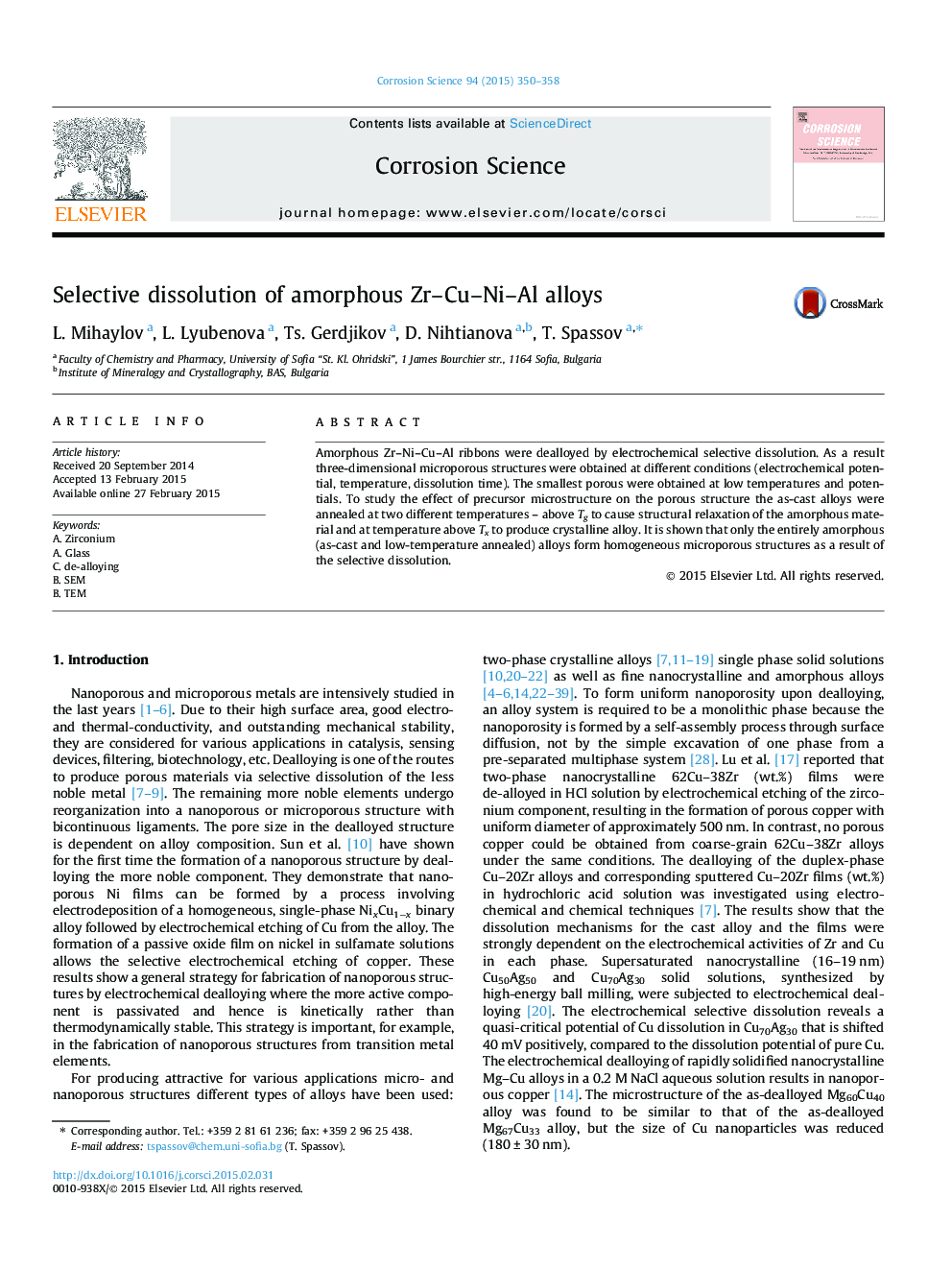| Article ID | Journal | Published Year | Pages | File Type |
|---|---|---|---|---|
| 1468651 | Corrosion Science | 2015 | 9 Pages |
•Selective dissolution of Zr–Ni–Cu–Al amorphous and nanocrystalline alloys.•Three-dimensional microporous structure obtained.•Proved surface controlled selective dissolution process.•Dealloyed ribbons retain their mechanical stability.
Amorphous Zr–Ni–Cu–Al ribbons were dealloyed by electrochemical selective dissolution. As a result three-dimensional microporous structures were obtained at different conditions (electrochemical potential, temperature, dissolution time). The smallest porous were obtained at low temperatures and potentials. To study the effect of precursor microstructure on the porous structure the as-cast alloys were annealed at two different temperatures – above Tg to cause structural relaxation of the amorphous material and at temperature above Tx to produce crystalline alloy. It is shown that only the entirely amorphous (as-cast and low-temperature annealed) alloys form homogeneous microporous structures as a result of the selective dissolution.
